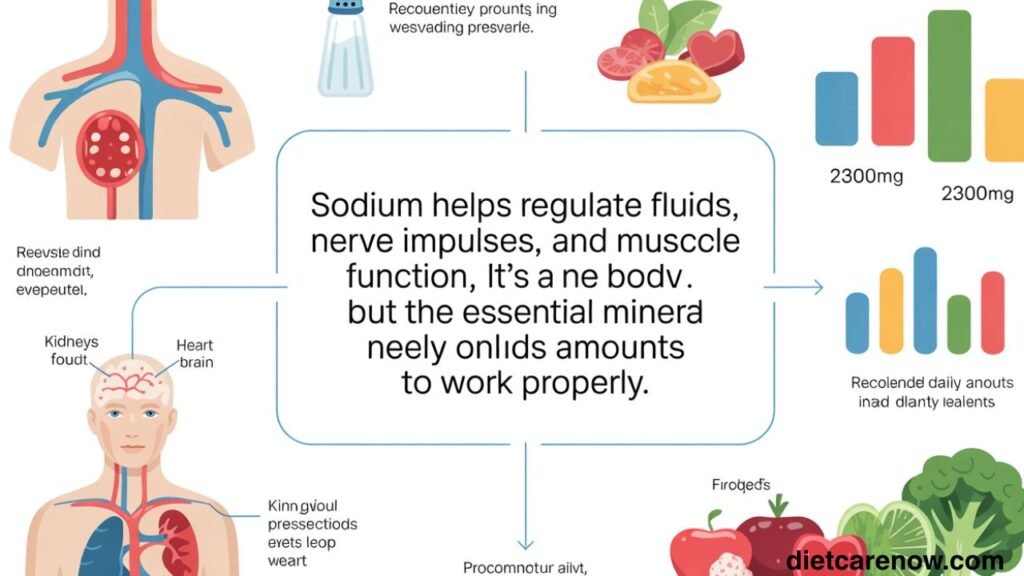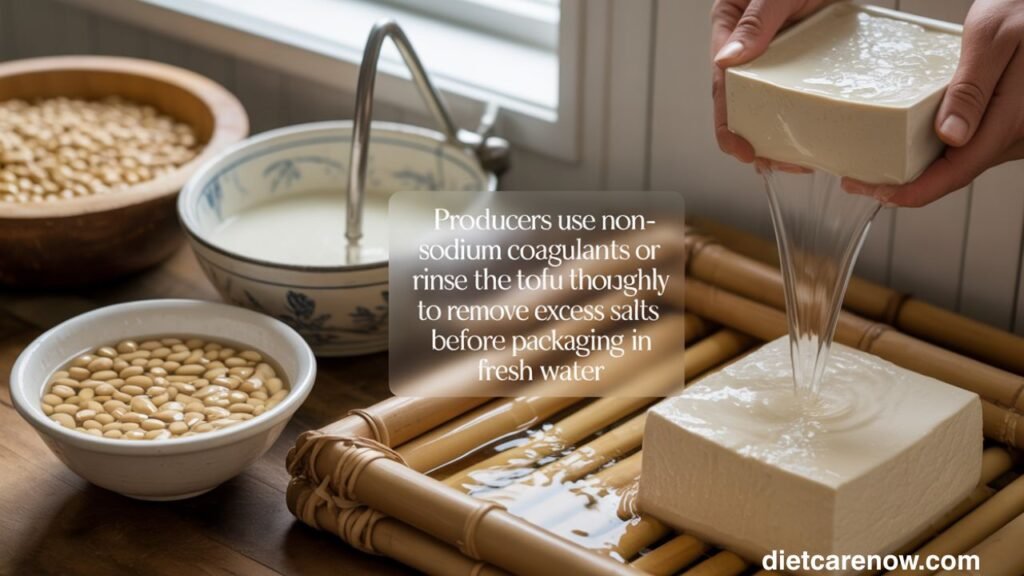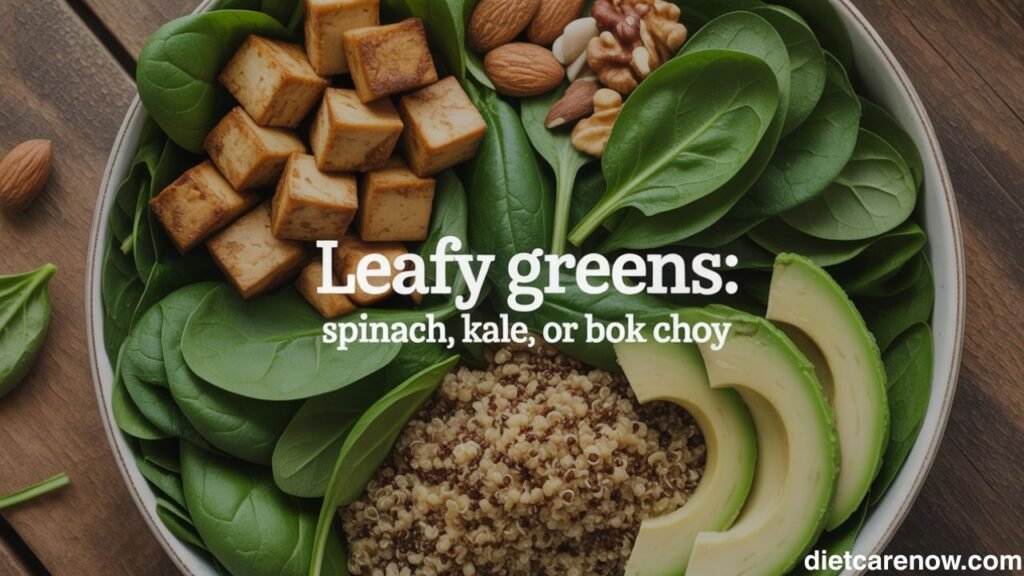If you’ve ever looked for a clean, plant-based source of protein, tofu probably made it onto your list. But did you know not all tofu is created equal? In recent years, low-sodium tofu has gained attention among health-conscious eaters who want to enjoy tofu’s benefits without excess salt.
What Is Tofu?
Tofu, often called bean curd, is made from soybeans. The process starts with soaking and grinding soybeans into soy milk, which is then curdled using a coagulant such as calcium sulfate or magnesium chloride. The curds are pressed into blocks — that’s the tofu we find in stores.
How Traditional Tofu Is Made
Traditional tofu typically involves adding salt during coagulation or packaging, which increases its sodium content. Regular tofu can contain anywhere from 100–300 mg of sodium per serving, depending on how it’s processed and stored.
The Growing Popularity of Low-Sodium Diets
More people today are paying attention to sodium intake because excessive salt is linked to high blood pressure, heart disease, and kidney problems. As awareness grows, so does the demand for low-sodium alternatives — from soups and sauces to now, tofu.
Why Low Sodium Tofu Is Becoming a Healthy Alternative
Low-sodium tofu offers all the protein, calcium, and versatility of traditional tofu, minus the added salt. It’s ideal for anyone watching their sodium intake, whether for heart health, hypertension, or general wellness. Plus, it allows you to season your dishes your own way.
Understanding Sodium and Its Impact on Health
The Role of Sodium in the Body
Sodium helps regulate fluids, nerve impulses, and muscle function. It’s an essential mineral, but the body only needs small amounts to work properly.
Recommended Daily Sodium Intake
Health authorities like the American Heart Association (AHA) recommend limiting sodium to no more than 2,300 mg per day, with an ideal limit of 1,500 mg for most adults, especially those with hypertension or cardiovascular risks.
Health Risks of High Sodium Consumption
Too much sodium can cause the body to retain water, increasing blood pressure. Over time, this extra strain on the heart and arteries may lead to hypertension, stroke, or kidney damage.
Importance of Choosing Low-Sodium Foods
Switching to low-sodium options — such as low-sodium tofu — helps maintain a balanced diet, lowers blood pressure naturally, and reduces your risk of chronic diseases without compromising on nutrition.
Also read: /low-fat-low-sodium-cottage-cheese/

What Makes Tofu “Low Sodium”?
How Sodium Is Introduced in Tofu During Processing
Sodium can enter tofu during the curdling stage if salts like magnesium chloride (nigari) are used. Some tofu varieties are also packed in salted water or seasoned marinades.
Difference Between Regular and Low Sodium Tofu
Low-sodium tofu is made with minimal or no sodium coagulants and stored in fresh water instead of saline solutions. The result is tofu that contains less than 25 mg of sodium per serving — a significant drop compared to standard tofu.
Reading Labels: How to Identify Low Sodium Tofu Brands
When shopping, check labels for:
- Sodium per serving: Aim for below 50 mg.
- No added salts or flavoring agents.
Brands like House Foods, Nasoya, and Wildwood offer low-sodium or sodium-free options.
Nutritional Profile of Low Sodium Tofu
Macronutrients
A typical 100-gram serving of low-sodium tofu provides:
- Protein: 8–10 grams
- Fat: 4–6 grams (mostly unsaturated)
- Carbohydrates: 2–3 grams
- Calories: Around 70–90
Micronutrients
Low-sodium tofu is rich in:
- Calcium: Important for bone health
- Iron: Vital for red blood cell production
- Magnesium: Supports muscle and nerve function
- Phosphorus: Strengthens bones and teeth
Comparison: Regular vs. Low Sodium Tofu
| Nutrient (per 100g) | Regular Tofu | Low Sodium Tofu |
|---|---|---|
| Sodium (mg) | 150–300 | 10–25 |
| Protein (g) | 8–10 | 8–10 |
| Calcium (mg) | 150–350 | 150–350 |
| Calories | 70–90 | 70–90 |
How It Fits into a Balanced Diet
Low-sodium tofu fits easily into plant-based, heart-healthy, or weight management diets. It’s versatile, nutrient-dense, and supports satiety without excess calories or salt.
Health Benefits of Low Sodium Tofu
Supports Heart Health
Lower sodium intake helps reduce blood pressure, improving heart function. Combined with tofu’s plant-based protein, it’s excellent for cardiovascular wellness.
Helps Manage Blood Pressure
People with hypertension benefit from replacing high-sodium proteins like processed meats with tofu.
Reduces Water Retention
Too much salt can make you feel bloated. Low-sodium tofu prevents that while keeping you full and energized.
Ideal for Kidney-Friendly Diets
Since kidneys regulate sodium, cutting back reduces their workload, making low-sodium tofu perfect for kidney-conscious eating plans.
Boosts Overall Wellness
Tofu’s antioxidants, isoflavones, and nutrients support overall well-being, from hormone balance to muscle repair.
How Low Sodium Tofu Is Made
Overview of the Tofu-Making Process
- Soak and grind soybeans.
- Boil and strain to extract soy milk.
- Add coagulant to form curds.
- Press curds into blocks.
How Manufacturers Reduce Sodium Content
Producers use non-sodium coagulants or rinse the tofu thoroughly to remove excess salts before packaging in fresh water.
Home Preparation: Making Your Own Low Sodium Tofu
You can make it at home using soy milk, lemon juice, or vinegar as a coagulant. Pressing and storing it in filtered water ensures minimal sodium.
Tips for Maintaining Texture and Flavor
- Use firm tofu for savory dishes.
- Marinate in herbs, garlic, and citrus for flavor.
- Press out excess water before cooking.

How to Choose the Best Low Sodium Tofu at the Store
Key Things to Check on Packaging
- Sodium content per serving
- “Unsalted” or “low sodium” labels
- Freshness date and packaging, water clarity
Certified Organic and Non-GMO Options
Always look for organic and non-GMO certifications, since tofu comes from soybeans, one of the most commonly genetically modified crops.
Comparison of Top Brands
- House Foods Low Sodium Tofu – widely available, under 25 mg sodium
- Nasoya Organic Tofu – non-GMO, low-sodium versions available
- Wildwood Sprouted Tofu – organic, rich in protein, very low in sodium
Price and Availability
Low-sodium tofu is affordable and found in most grocery stores or Asian markets, usually costing between $2 $4 per block.
Cooking with Low Sodium Tofu: Tips and Tricks
Preparing Tofu for Cooking
- Press it: Removes excess water for better texture.
- Marinate it: Use citrus juice, vinegar, garlic, or herbs.
- Bake, grill, or pan-fry: These methods enhance flavor without salt.
Enhancing Flavor Without Salt
Try flavor-boosters like:
- Fresh herbs (basil, cilantro, dill)
- Spices (turmeric, paprika, cumin)
- Acidic ingredients (lemon, lime, vinegar)
Cooking Methods That Preserve Nutrition
Steaming, baking, or light sautéing preserves nutrients better than deep-frying.
Delicious Low Sodium Tofu Recipes
Breakfast: Veggie Tofu Scramble
Crumble tofu, sauté with spinach, tomatoes, and turmeric for a hearty morning meal.
Lunch: Low Sodium Tofu Salad Bowl
Combine cubed tofu, quinoa, cucumber, and lemon-tahini dressing.
Dinner: Garlic-Sesame Stir-Fried Tofu
Cook tofu with broccoli, sesame oil, and garlic for a flavorful yet heart-friendly dinner.
Snack: Baked Tofu Bites
Marinate tofu in herbs and olive oil, bake until crisp — perfect for snacking.
Dessert: Silken Tofu Smoothie
Blend silken tofu with banana, berries, and a drizzle of honey for a creamy, protein-packed treat.
Combining Low Sodium Tofu with Other Heart-Healthy Foods
Pair tofu with:
- Leafy greens: Spinach, kale, or bok choy
- Whole grains: Brown rice, quinoa, oats
- Nuts and seeds: Almonds, flaxseed, sesame
These combinations make balanced meals rich in fiber, antioxidants, and healthy fats — all beneficial for heart and kidney health.

Low Sodium Tofu for Special Diets
Vegan and Vegetarian Diets
Low-sodium tofu is a complete protein source, ideal for plant-based eaters.
DASH Diet
As a core element of the DASH (Dietary Approaches to Stop Hypertension) plan, tofu helps reduce sodium and saturated fat intake.
Low Sodium Meal Plans for Seniors
Older adults often need to limit sodium while keeping protein intake up — tofu does both.
Weight Management and Fitness-Friendly Uses
Tofu’s high protein and low-calorie content support muscle maintenance and fat loss.
Common Mistakes When Cooking Low Sodium Tofu
- Using high-sodium sauces like soy or teriyaki sauce
- Skipping the pressing step, which leads to soggy tofu
- Overcooking, which makes tofu rubbery
- Not seasoning creatively, resulting in bland dishes
Expert Opinions and Nutritionist Insights
Nutrition experts agree that tofu is a healthy plant protein. Studies published in the Journal of the American Heart Association show that replacing animal proteins with soy-based ones can improve cholesterol and lower blood pressure.
Registered dietitians emphasize that low-sodium tofu retains all of tofu’s nutritional benefits while being safer for individuals managing hypertension or kidney disease.

FAQs About Low Sodium Tofu
- Does low-sodium tofu taste different?
It’s slightly milder, but absorbs marinades and spices easily. - Can I use it in any tofu recipe?
Yes. Just season or marinate it to your taste. - How long does it last in the fridge?
Opened tofu lasts 3–5 days when stored in water and refrigerated. Change the water daily. - Is it suitable for kids or athletes?
Absolutely. It’s a great protein source for all ages and supports muscle repair for active individuals.
Conclusion: Why Low Sodium Tofu Deserves a Spot in Your Kitchen
Low-sodium tofu isn’t just another health trend — it’s a smart, versatile choice for anyone looking to reduce sodium intake without giving up taste or nutrition. It fits perfectly in vegan, DASH, or balanced diets and can be used in countless recipes.
So next time you shop for tofu, check the label. Pick the low-sodium version, experiment with herbs and spices, and enjoy the clean, satisfying taste of a protein that truly supports your health.

